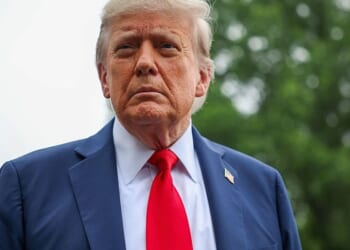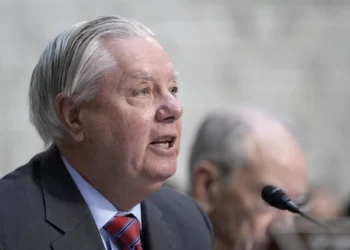Investors appear to be shrugging off warning signs that inflation is rising and are still betting that the Federal Reserve will cut interest rates in the coming months.
July inflation data from the consumer price index and the producer price index released this week offered new insights into inflation’s trajectory. The CPI showed inflation holding steady at 2.7%, above the Fed’s 2% target. However, the PPI showed inflation for the year ending in July jumping a whole percentage point to 3%.
On their face, those headline numbers and overall trend of inflation suggest that the Fed still has more of a fight left in its quest to vanquish too-high inflation.
Yet that fear is counterbalanced by worries that the labor market is slowing. As a result, it appears that, despite the concerning inflation data, the first interest rate cut in about a year will happen in September.
“I think the Fed is in a really difficult position, there’s all sorts of contradictory numbers out there, and so what do you do?” Wayne Winegarden, an economist at the free-market Pacific Research Institute, told the Washington Examiner.
As of Friday, investors are pegging nearly 85% odds that the Fed will cut rates next month, according to the CME Group’s FedWatch tool, which calculates the probability using futures contract prices for rates in the short-term market targeted by the Fed.
Investors also expect one or two more rate cuts before the end of 2025, in addition to the one next month.
However, the situation for the Fed, under the leadership of Chairman Jerome Powell, is a tricky one because the Fed has a dual mandate: price stability, which is making sure inflation stays near 2%; and full employment, which is making sure the unemployment rate doesn’t rise and the jobs market is strong.
All else equal, the Fed will cut interest rates when unemployment is rising and the economy appears to be faltering because doing so can increase investment and give a shot in the arm to the jobs market. Alternatively, if inflation is rising, the Fed will raise interest rates, which dampens demand and can cause prices to moderate.
It is easy for the Fed to make interest rate decisions when one of the two prongs of its dual mandate is out of balance. However, it is a much trickier situation right now, because while inflation is still too high, there are growing indications that the labor market is starting to falter.
The July jobs report revealed that some 258,000 fewer jobs were added in May and June than previously reported. And while a jobs report can be a one-off aberration, the three-month moving average of job gains was just 35,000 in July, below the level needed to keep pace with population growth. President Donald
Trump fired the head of the Bureau of Labor Statistics after the report was released.
Desmond Lachman, a senior fellow at the American Enterprise Institute, told the Washington Examiner pointed out the contradictory nature of the two inflation reports this week, but emphasized that the weakening jobs market is likely to push the Fed toward cutting rates at its meeting next month.
“The labor market looks like it’s weakening in a big way,” Lachman said. “So the number of jobs created since the tariffs is really very low, so that indicates that the economy is slowing a lot.”
That makes for a tricky calculus for the Fed. If it holds rates too high for too long, the central bank risks causing the economy to falter and even fall into a recession — a situation that, in addition to causing hardship for families across the country, would also be bad for Trump and Republicans politically.
At the same time, if the Fed cuts too much too quickly, it could cause another big wave of inflation. That, too, would inflict misery on households and also cause political pain for Trump, who was elected in large part because of voter discontent with the inflation felt under former President Joe Biden.
Lachman said Powell and the Fed will have to make an important decision at the September Fed meeting.
“Is the labor market cooling sufficiently enough to offset the fact that inflation is increasing?” Lachman said of the situation.
Still, there are other signs that the labor market might not be faltering as much as some fear. For instance, jobless claims aren’t shooting up quickly as one might expect if the labor market were quickly souring.
There is also the question of just how much of an effect Trump’s aggressive tariff agenda is having on prices. Earlier in the year, some economists warned that they would spark a big, although perhaps temporary, boost in inflation readings. The worst of that hasn’t happened, although some argue that it’s just because the tariffs haven’t fully filtered through.
Winegarden also added that the jobs market can be affected if companies try to absorb some of the blow from the tariffs.
“If the companies are eating it, that means the job markets are going to continue to weaken and we’ll have that problem,” he said.
CONSUMER SENTIMENT DROPS AND INFLATION FEARS RISE AS TRUMP PUSHES TARIFFS
And while investors are expecting at least one rate cut this year and likely more, Mark Hamrick, senior economic analyst at Bankrate, emphasized to the Washington Examiner that a lot can change in the coming weeks as more data comes in.
“Those who are making the bets relative to the fed fund futures don’t have any better transparency on the situation than anyone else,” Hamrick said, “meaning that we still have a full month of data yet to digest, and some of the data could cause some indigestion in the sense of resetting expectations for the mid-September Fed meeting.”















